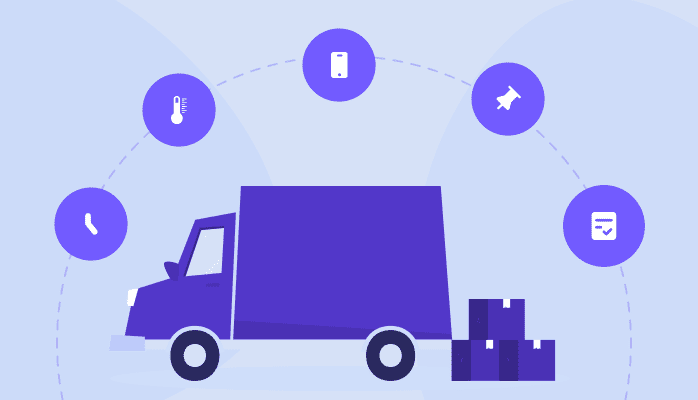5 Pitfalls in the Multimodal Visibility Software Solution Market
Today’s global marketplace requires products to make lengthy journeys, moving through many countries and crossing borders by air, train, or sea to reach their final destination via truck or 2-wheelers to fulfill the orders. In the modern supply chain, multiple chains of events are coordinated to create seamless transportation from the source to the last mile. Therefore, it makes multimodal visibility extremely important to obtain a comprehensive end-to-end view of the supply chain’s transportation.
Businesses are sourcing globally for better deals, trade has become more internationalized over the years, and online purchases are skyrocketing. These custom orders’ increased frequency and volume have significantly impacted the logistics industry, leading to higher transportation costs and container traffic growth.
Let’s look back and see the contemporary challenges set to explode in the logistics and supply chain industry.
In-transit visibility is not end-end supply chain visibility: Beyond the Myth.
Over the last decade, when technology advancements have been steadily increasing, multiple solutions have emerged that offer real-time transportation visibility into truck and container loads. Those solutions solved the niche pain point “Where is my shipment?”. They provided real-time updates to stakeholders, leaving pre-shipment supply chain operational planning at the mercy of shippers and logistics service providers.
There are many players in the market, but there needs to be a unified, flexible platform that brings pre-shipment, in-transit, and post-shipment together to plug coordination and communication across the supply chain network to bolster efficient operations.
Multiple vendors to manage the supply chain operation: The Disconnected Dots
A digitized end-end supply chain is only possible with the involvement of multiple vendors. That is because each vendor offers a point solution to a pain point, which, when put together, will help manage the entire process. However, onboarding and managing multiple vendors can be challenging, time-consuming, and involve substantial business operational costs. Also, it can aggravate the complexity while working towards achieving common supply chain goals – with differentiated responsibilities, KPIs, and success metrics for all the parties involved.
Rigid shipment mode solution-ing: Perils of One Size Fits All Approach
The need for data visibility is becoming more and more crucial with the advent of evolved shipment packaging technologies, which has had a cascading effect on less than truckload, parcel, and courier shipment solutions. Supply chain legacy platforms have to change the foundation layer of the engineering architecture to make a paradigm shift and serve the individualized needs of the businesses. It’s easier said than done.
This is problematic because the data and insights about their supply chain need to be updated and provide accurate information, causing them to lose out on valuable proactive decision-making and forecasting opportunities. In addition, as the shippers and logistics service providers grow, they have to expand their boundaries, and this is when they realize that the one size fits all approach doesn’t work for them anymore.
Integration challenges to digitizing your supply chain: The Ground Reality
Even today, Electronic Data Interchange (EDI) is helping to streamline the process of logistics and allow for easy record-keeping and sharing of files across the network. However, the highly fragmented supply chain industry needs a comprehensive tool to handle the necessary EDI functions, API connectors for real-time data transfers, and webhooks for timely updates to 3rd party TMS and financial and other platforms.
Additionally, some concerns are that using multiple applications to track an order’s location may cause vendors to devise a different way of monitoring packages that are legal and won’t create too much burden on the businesses. For example, ELD/GPS for real-time location tracking and batch files for processing check calls to tide over any eventualities cannot be written off.
The demand for integrating All-in-one connectors to enable real-time data transfer capabilities has grown over the years to disseminate shipment transactions and events across the entire ecosystem for better value chain visibility.
Eagle view of the end-end multimodal visibility: The supply chain Trade-Off
Businesses require historical and real-time data streams on all supply chain touchpoints to gain insights into the pre-shipment operational planning process, in-transit, and post-shipment phase and enable supply chain executives with a tool they need proactive decision-making and production planning.
One of the most time-consuming and expensive parts of supply chain orchestration platform implementation is connecting TMS, Real-time Transportation visibility, and financial systems with existing systems. The process involves ensuring that data is correctly transferred between the two systems and that changes to one system are reflected in the other. To build a supply chain that can withstand today’s unexpected challenges and prepare our business for the future, we need to derive intelligent insights across our logistics and technological partner network.
However, given that supply chains have a crucial role in today’s connected world, logistics and shippers still require end-to-end visibility for their customers to enable sustainable practices across the value chain, which means one unified view of our shipments regardless of where it is or how it’s getting there.
Join the Supply Chain of the Future! Take a tour of the latest and greatest in the Settyl, a Low-code supply chain visibility platform.
